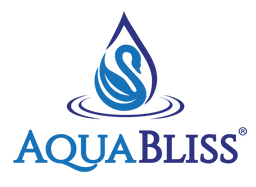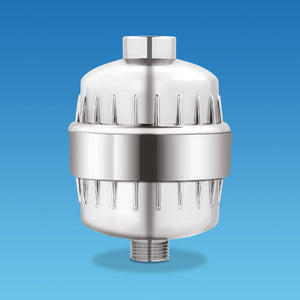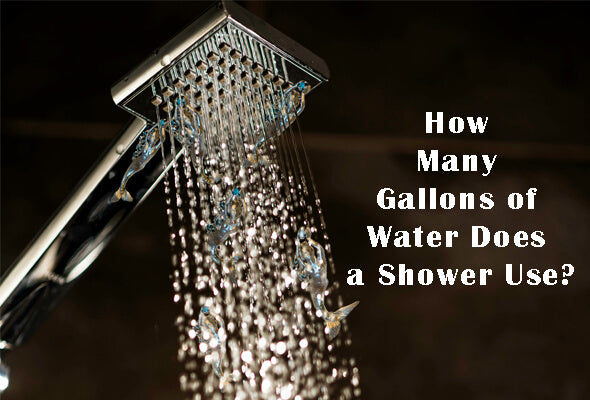On average, a shower uses about 17.2 gallons of water. In these cases, the shower time tends to fill up just over eight minutes.
People who enjoy long showers, shaving while washing, or shampooing and conditioning their hair will end up using more than 17.2 gallons of water per eight minutes.
This isn’t even counting for the water that’s used when you go to the toilet. Keep in mind that the amount of water used for the shower is based on the GPM (gallons per minute) rating of the shower head - so if you have a 2.5 GPM and spend 10 minutes in the shower, you will use 25 gallons VS someone in California that has a 1.65 GPM and spends 10 minutes in the shower, they have used 16.5 gallons.
If you’re interested in saving water or lowering your monthly bills, knowing how many gallons of water does a shower use is the first step. It’s also important to understand the factors that influence water consumption, average shower time, and your showerhead’s GPM rating.
Factors influencing water usage in showers
A handful of factors determine whether someone’s cold or hot shower each day adds up to a bigger water bill. Let’s explore what the average shower really looks like, the differences that high vs. low-flow showerheads can make, and more.
These are some of the most important elements that determine shower water use.
The gallons per minute (GPM) rating

While the average shower uses about 17.2 gallons of water every eight minutes, it’s important to understand the gallons per minute rating of the showerhead. This, alone, can skew the average shower time beyond what’s currently on record.
In a nutshell, the GPM is a set limit on the amount of water that is permitted to leave shower heads within one minute. Typically, you’ll find the restrictions range between 1.65 gallons to 2.5 gallons.
In some cases, these limits may be higher or lower. Shower head GPMs are not universal. GPM restrictions exist in some states across America. California, Hawaii, Oregon, and Washington, for example, have 1.8 GPM limits.
In Vermont, Massachusetts, Colorado, Rhode Island, Maine, and New York, new showerheads are required to have a GPM restriction of 2.0 GPM. As we explore the elements that influence shower water use, it’s important to remember the GPM ratings.
Look at it this way: if someone in California takes a ten-minute shower, using a showerhead with a 1.65 GPM limit, they will have used 16.5 gallons of water. With that in mind, it’s safe to assume that showerheads without GPM restrictions are more likely to use a higher volume of water than their more managed counterparts.
Given the rising worldwide concerns about energy efficiency, it’s quite conceivable that more shower heads will come with these built-in limits of minute-by-minute water usage.
Shower duration
The duration of a shower goes hand-in-hand with water consumption levels. Whether you’re using hot water or cold water, a five-minute shower is more conducive to water saving than an eight-minute or ten-minute shower.
Shower duration is ultimately one of the most pivotal factors that will determine one’s overall water consumption.
Showerhead type
Having a water-efficient showerhead can make all the difference in the world. This directly impacts your water bill via your consumption levels. However, not all shower heads are made equal.
AquaBliss is proud to offer a premier shower head collection that can cut back on wasted water without negatively impacting the quality of your shower.
Our efficient shower heads are cost-efficient and offer a series of features, ranging from ultra-high pressure and TheraSpa handheld sets to multistage and revitalizing filters. With each of our options, you’ll be able to conserve water, enjoy a steady flow rate, and use fewer gallons of water over the long term.
Water pressure

Just like having the right shower head, your level of water pressure will directly impact shower water usage. Low-flow showerheads, for instance, are specially made to save water.
This is done by lowering the flow intensity, which also goes hand in hand with energy savings. High flow showerheads, on the other hand, increase your water flow intensity.
Generally, this is done to make showers more enjoyable but it can lead to twice as much water being used. People who prefer a longer shower length with lots of hot water may find a higher flow to be preferable to a low-flow showerhead.
Personal habits
Water usage, at the end of the day, is significantly impacted by each individual’s personal habits. This applies regardless of whether one is using conventional showerheads, low-flow showerheads with less water, or high-flow showerheads with even more water.
People who shower every other day may require less water to clean up, as opposed to folks who make washing or getting in the bathtub a daily habit. If you happen to work in construction or another job that requires coming into contact with dirt and other physical elements, it can be hard to reduce water usage.
How many gallons of water are used per shower by the average user?

Many people find themselves wondering how much water is used by the average home or person. As it turns out, the water use per shower stands at 17.2 gallons per eight minutes.
Keep in mind that low-flow showerheads lead to less water consumption, which naturally reduces the gallons of water per minute. On the other hand, many people reject the low-flow option.
Some prefer higher flow rates and take showers that last as long as 15 or 20 minutes. While this may be more comfortable or enjoyable, it doesn’t conserve water, and it certainly eats up more gallons of water per minute.
Multiple reports indicate that water bills are on the rise, which indicates more individuals aren’t too keen on a lower flow rate. Impacting these bigger payments are not just shower and baths but also toilet usage, dishwashers, and other uses of water in the tank.
Over the long run, however, more water consumption can necessitate having to fill your tank more frequently. This quickly eats away at time, money, and other resources.
How much do showers take up from average water use?
According to the Environmental Protection Agency (EPA), showers account for about 17% of household water consumption. Plumbing issues, leaky faucet problems, toilet complications, and even your bathroom sink can contribute to the amount of water each home uses.
Because of all these different factors, some people have found that getting a tankless water heater can lower their utility bills each month.
How many gallons of water does a shower use per minute?
If you’re wondering “how much water does a shower use,” you’re in luck, as the EPA has a confirmed answer. On average, shower water usage by the minute stands at about 2.1 gallons of water, which adds up to 17.2 gallons in about eight minutes.
Don’t forget, however, that these numbers can vary. A low-flow showerhead consumes less water than its higher-flow counterpart.
How much water is used based on eight-minute shower calculations?
Each person’s water level when taking a shower will impact the amount of energy they consume. For instance, an inefficient showerhead can eat up five gallons of water every minute.
Multiplied by eight, this leads to 40 gallons of water used after just eight minutes. Naturally, this will lead to a higher water bill. Standard and efficient showerheads are better.
For each minute the standard showerhead typically consumes 2.5 gallons of water each minute, while its efficient counterpart uses 1.5 gallons. This means that for every eight minutes, a standard showerhead will eat up 20 gallons of water, while the efficient showerhead uses 12 gallons.
If you’re ready to stick with just enough water and avoid energy waste, you’ll want to invest in an efficient showerhead.
Tips for reducing water usage in showers
Did you know it’s possible to get the same amount of cleaning done without running up your water bill? The following seven tips can assist with water saving, making your life easier and more efficient.
Installing low-flow showerheads
Many (or even most) showerheads are not necessarily water-efficient. Switching to a low-flow showerhead can assist with this.
Our collection can not only lower the amount of water you use per minute but also conserve energy. Over the long term, you’ll save money on your water bill and help benefit the planet as a whole.
Taking shorter showers

Spending less time in the shower can automatically reduce used water gallons per minute. If you’re interested in lowering your carbon footprint, keeping more water in your tank, and keeping your money from going down the drain, shorter showers can be beneficial.
Try cold showers
Temperature has more than a little influence when it comes to the time people spend in the shower. Because many folks opt for steamy hot showers that they’re more familiar and comfortable with, this often leads to longer wash sessions and more gallons of water per minute.
With cold showers, you’ll not only save water, but you’ll also enjoy some nice health benefits. Taking a shower or bath with cold water has been linked to improved circulation, a stronger immune system, and a higher metabolism.
Using a shower timer
How many gallons does a shower use? 17.2 gallons of shower water usage is far higher than it needs to be. Thankfully, shower timers can assist with this. If you’re ready to start conserving water, a shower timer is a good way to realize exactly how much time you spend showering, shampooing, and conditioning your hair.
You can then set your shower timer to however many minutes you feel comfortable with. Preferably, you’ll want the timer to be at least a little below the average shower duration of eight minutes.
Turning off water while lathering or shaving
When most people shower, they let the water run when they’re lathering with soap, lathering their hair with shampoo/conditioner, or even shaving. Unfortunately, this plays a huge role in how many gallons are used.
Consider intermittent water usage. In doing this, you can stick with the same flow rate of water. The only difference is the water will be turned off when you’re not actively using it to wash or rinse your body.
Once you start turning off the shower while lathering or shaving, your water gallons per minute will drop.
Take fewer showers
People who take more showers than necessary can suffer from a depleted water tank, clogged drain problems, and even a bathtub or shower stall gets dirtier more often.
Fewer showers, on the other hand, conserve water, energy, and money, especially over the long term. Contrary to popular belief, you can remain hygienic while taking fewer showers.
Fixing leaks promptly
If you’re dealing with leaky faucets anywhere in your home, this is something you should take care of as soon as possible. Whether the problematic faucet is tied to your bathtub, sink, toilet, or automatic dishwasher, it’s still needlessly putting water and money down the drain.
Any leaky faucet can run up your water bill and adversely contribute to the gallons of water used on a daily basis. If you’re dealing with water leaks in your home, be sure to call a licensed plumber.
Contrary to popular belief, plumbers assist with a wide variety of home issues that extend beyond your typical clogged toilet.
Does a shower or bath consume more water?
While it’s quite common to wonder how many gallons of water does a shower use, baths are oftentimes forgotten about. As it turns out, soaking in the tub typically eats up more water than cleaning up in the shower.
The EPA links full bathtub usage to about 70 gallons of water. This means that people who take a daily bath in the tub are using far more water than someone who tidies up in the shower.
While everyone doesn’t fill their bathtub to the very top, they often require extra water usage just to clean their tubs afterward. This, too, can contribute to a higher consumption of water.
Enjoy more efficient showers with AquaBliss
Whether you’re taking a shower or bath, it’s possible to lower the gallons of water used. This not only helps the environment but also lowers your water bill. With a low-flow showerhead and intermittent water usage, you can take your water consumption levels below the 17.2 gallons that are used in your average eight-minute shower.
Don’t forget to check your bath faucet, toilet, and other areas of your home for any leaks. The EPA estimates that 10% of homes with leaks waste up to 90 gallons of water each day. It doesn’t have to be this way, though.
You can take a shower without wasting water in your tank or adversely impacting the environment. There’s never been a better time to get started, saving yourself both time and money. Explore AquaBliss’ state-of-the-art water shower head collection. If you have any questions, feel free to contact us here.







